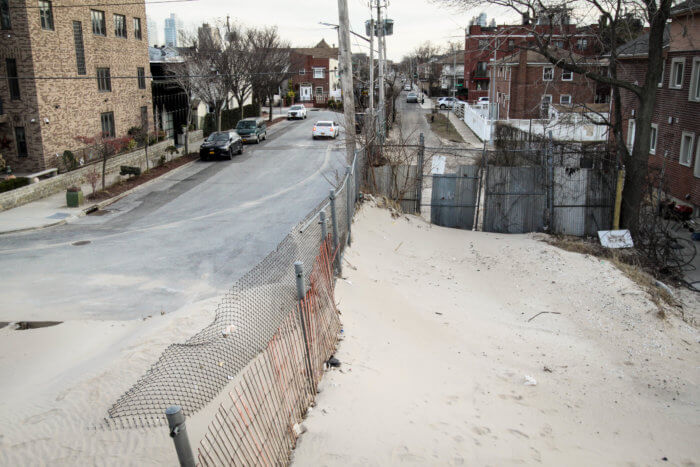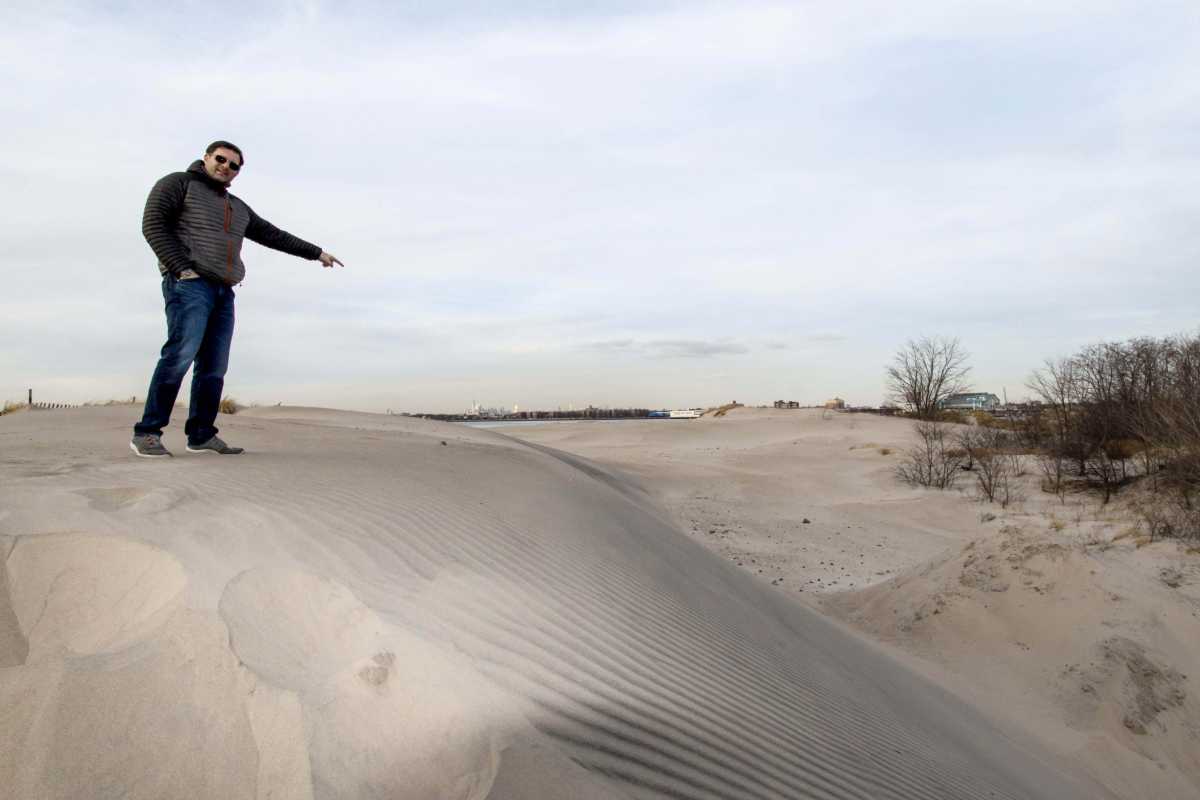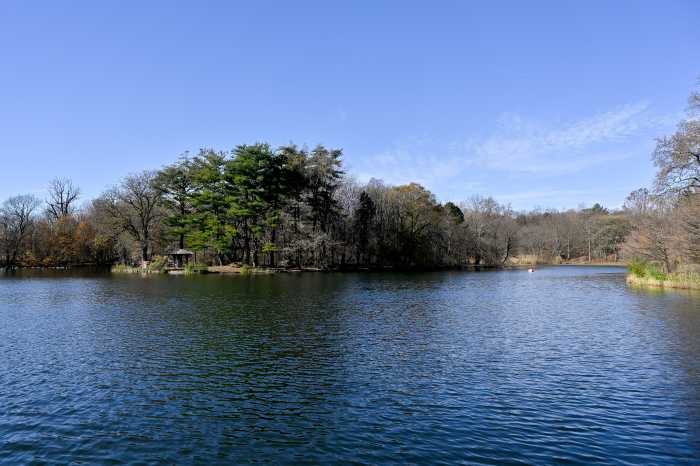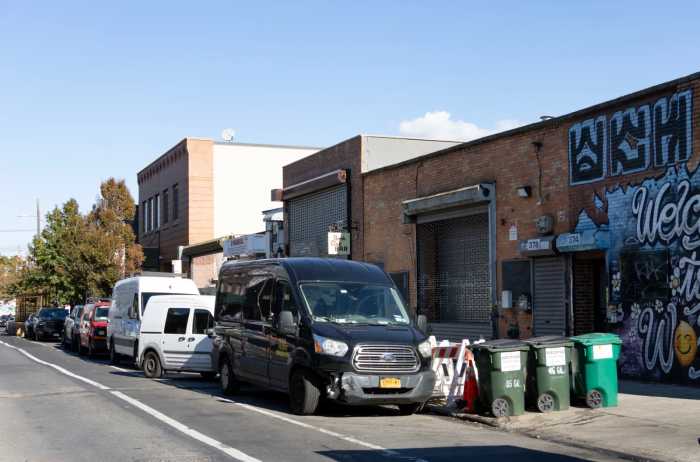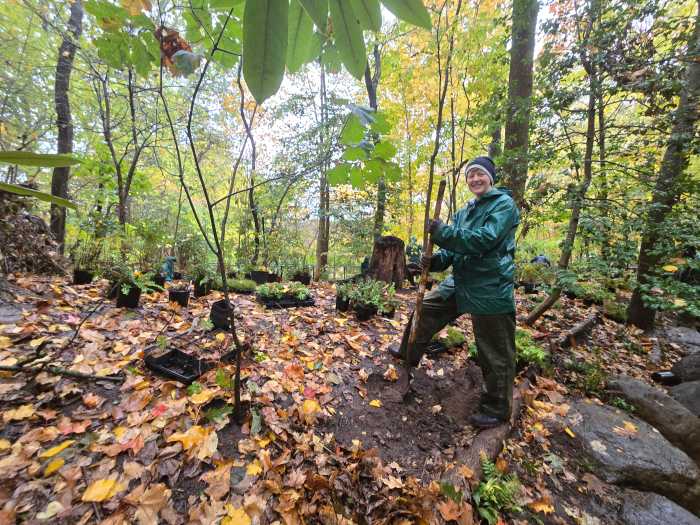A decades-long scheme to shore up the southern Brooklyn coast has resulted in a massive wall of sand that’s built up along the tip of the Coney Island peninsula — causing property damage, health problems, drainage issues, and eye sores, according to locals.
“It’s like Lawrence of Arabia out there,” said Anthony Ceretti, whose mother-in-law has lived for decades in Sea Gate, a gated community on the western tip of the peninsula. “We get hundreds of pounds of sand on our deck each year.”
The first major fortification project came in the mid-1900s when the US Army Corps of Engineers extended a rock-based substance called a terminal groin and added 35,000 cubic yards of sand to the ocean side of the peninsula in an effort to prevent future erosion.
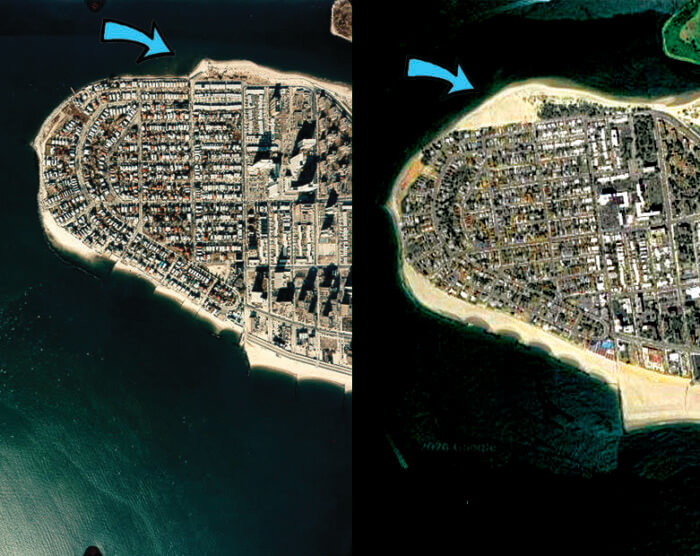
Right: Sea Gate in 2020, where a gigantic beach has grown.US Army Corps of Engineers / Google Maps
Over time, however, tidal patterns shifted much of the sand to the side of the peninsula opposite the boardwalk — which led to the creation of a beach surrounding the northern shore of Coney Island and Sea Gate, according to one longtime civic leader.
“There was never a beach on the bayside of the peninsula,” said environmentalist Ida Sanoff, who formerly lived in Sea Gate by Gravesend Bay. “At low tide, we used to get maybe six feet of wet sand.”
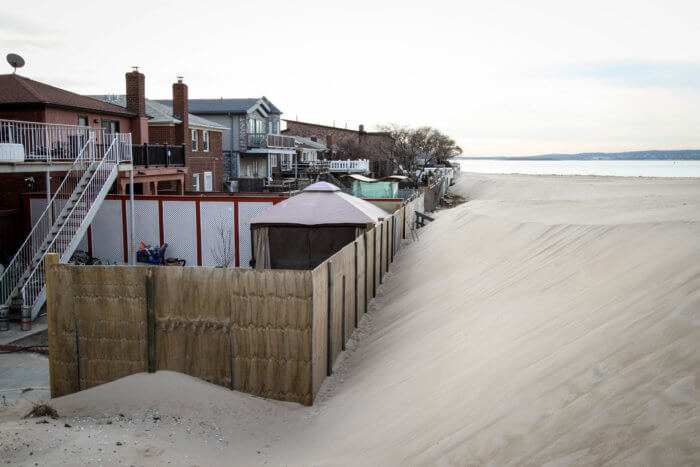
Locals eventually adapted to the new reality, enjoying their man-made beach — even if it caused the occasional drain backup and sand accumulation.
But the dunes started to grow as the US Army Corps and the Parks Department continued to dump thousands of pounds of sand onto the beach’s southern shore — which would migrate up to Gravesend Bay. The Corps and the Parks Department have conducted several sand removal projects on the northern shore and constructed new terminal groins in 2016 to help prevent the buildup, but residents say that conditions only worsened — and have reached a breaking point.
“This year is the worst year I’ve seen,” said Ceretti.
These days, the sand dune is fortified above the walls that surround Sea Gate, often spilling over the fences and covering residents’ yards like snow.
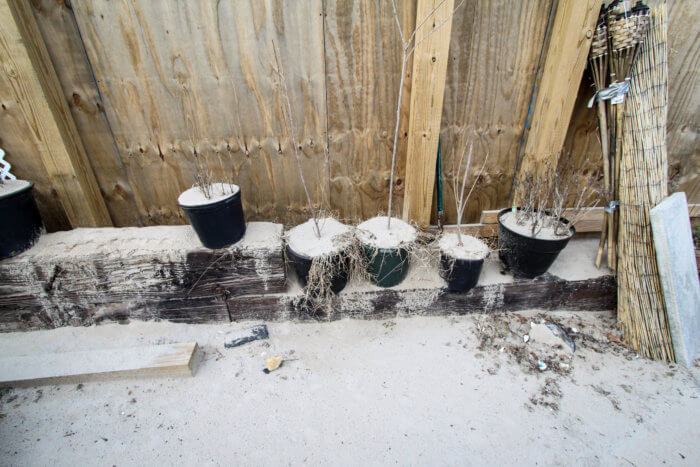
Homeowners who live in the dozen-or-so houses along Ocean View Avenue complain that the giant dune blocks their view of Gravesend Bay and causes a plethora of consequences.
“It takes over our backyard and causes all kinds of damage,” said Patrick Fioriglio, who lives on the maritime roadway next to the bay. “There’s health problems. There’s breathing problems.”
Sea Gate residents can navigate a number of bureaucratic hurdles each year to obtain a permit and hire a bulldozer to plow the sand back into the ocean — but even then, their relief is only temporary.
“Every year we have to push back the sand, it blows back, we push back the sand, it blows back,” said Fioriglio.
Ceretti added that residents fork over around $15,000 every year for the unsustainable plow job.
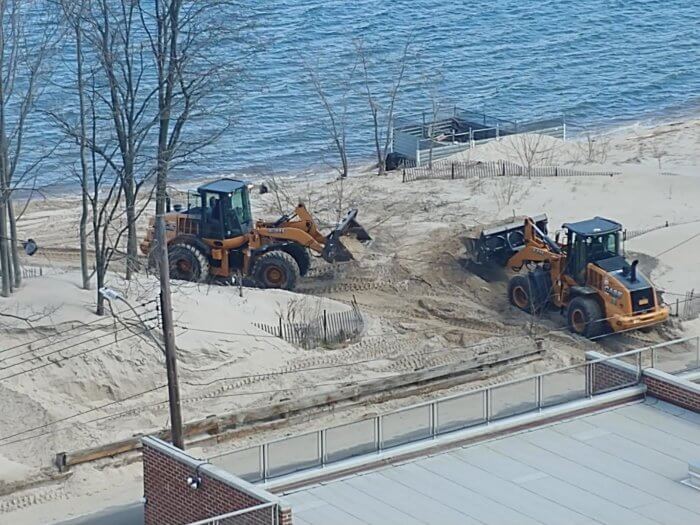
Much of the blame lies at the feet of the Parks Department, according to locals, who accuse the city’s greenspace gurus of failing to do their part to clear the sand from the public side of the fence that borders the private Sea Gate community — which allowed the wall to build up in the first place.
“If the city kept their side of the fence clear, Sea Gate would have a much smaller issue to contend with,” said Ceretti.
A representative from the US Army Corps of Engineers did not say whether the additional sand on the southern shore may have caused the gigantic sand dune to grow, but claimed that the t-groins have prevented conditions from worsening.
“Natural wave-action causes the sand to move, the groins are designed to keep the sand in place,” said Michael Embrich. “Without the groins, more sand would accumulate, and at a much faster rate.”
